Finding the Best Innovation Ideas
Saturday, July 19th, 2014- We want ourselves
- We can build
- Few others see as worthwhile.
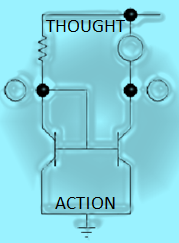 In one of my cognitive design workshops I have participants work with commercially available brain-computer interfaces and try to move an object on the computer screen with their mind. This frustrates most participants but for the 25% that can do it well it is a transformational experience. By relaxing or giving a thought command (e.g. “go up”), a mental state is translated into an action of the computer screen. Through trial and error they learn to adjust their mental states to get the desired outcome on the computer screen. For the first time a multi-media representation of an internal thought or feeling is used as a feedback signal to drive learning.
In one of my cognitive design workshops I have participants work with commercially available brain-computer interfaces and try to move an object on the computer screen with their mind. This frustrates most participants but for the 25% that can do it well it is a transformational experience. By relaxing or giving a thought command (e.g. “go up”), a mental state is translated into an action of the computer screen. Through trial and error they learn to adjust their mental states to get the desired outcome on the computer screen. For the first time a multi-media representation of an internal thought or feeling is used as a feedback signal to drive learning.
This simple exercise (when it works) demonstrates how the latest brain science can revolutionize our approach to learning, decision-making, creativity and other cognitive and mental performances.
This is basic neurofeedback but until you do it you lack the direct experience that is so valuable for excellence in design and innovation work.
Neurofeeback is not the only experience a cognitive designer needs. Others include plasticity, mirror neurons, cognitive illusions, magnetic stimulation, electrical stimulation (e.g. transcranial electric stimulation) and other forms of neuromodulation that are informed by the latest brain science. For readable review of some of the recent research check out Education and Neuroscience: An Expert Review on the ThInk blog.
While the promise that neuroscience holds for improving education and all brain-intense human activities is tremendous, progress has been slow and is likely to remain so. As one of the researchers points out:
“Realistically, on current trends, future development is likely to be slow, especially given the ethical and safety concerns”
One way to speed things up is to make creative use of approaches that have already proven to be safe and effective. That is why I spend my time creating experiences for designers and innovators. With simple brain computer interfaces, neuromodulators and magic kits we can already disclose new worlds.
Once seen there is no going back. Learning to move a cursor (or any object) with your mind is a gateway experience for would-be cognitive designers. How many design and innovation courses or programs offer that?
![]() Most people reading this blog post will have an avatar. Many will have several. These include the images and characters we upload and create for our blogs, email profiles and on the social networking and game site we frequent. Avatars range from traditional photos (e.g. head shots) to custom images all the way to personalized animated characters. Many of the people we interact with on-line will only know us visually through our avatars.
Most people reading this blog post will have an avatar. Many will have several. These include the images and characters we upload and create for our blogs, email profiles and on the social networking and game site we frequent. Avatars range from traditional photos (e.g. head shots) to custom images all the way to personalized animated characters. Many of the people we interact with on-line will only know us visually through our avatars.
The avatars we select or create can impact how we think, feel and behave in cyberspace. The effects can be pronounced. For example, recent research at Penn State suggests that when we customize our avatars we impact our perceptions on the virtual environments we are in. More specifically:
“A group of students who saw that a backpack was attached to an avatar that they had created overestimated the heights of virtual hills, just as people in real life tend to overestimate heights and distances while carrying extra weight…”
This leads to the belief that you would have more difficulty climbing a virtual hill.
Students that were assigned an avatar with a backpack did not feel this way. This suggest we are really putting ourselves into our avatars (agency) as we customize and design them.
Bottom line for designers- tuning when and how people can customize their avatars may produce specific cognitive effects.
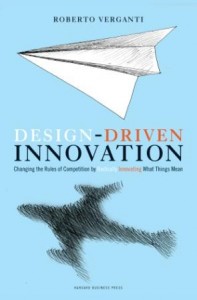 Roberto Verganti has some important insights into how innovation works for cognitive designers. If you don’t know his work check out, Design Driven Innovation. He emphasizes innovations produced by changing the deep psychological and sociological meanings we attach to products and services rather than more traditional technology/capability or market driven innovation methods. Examples include how Artemide reframed the meaning of lamps from something beautify that casts light into something that lifts your mood and makes you feel better. Likewise Sony’s Wii reframed playing video games into a full-body social experience. In both cases these new meanings were proposed to customers rather than crafted in response to perceived needs.
Roberto Verganti has some important insights into how innovation works for cognitive designers. If you don’t know his work check out, Design Driven Innovation. He emphasizes innovations produced by changing the deep psychological and sociological meanings we attach to products and services rather than more traditional technology/capability or market driven innovation methods. Examples include how Artemide reframed the meaning of lamps from something beautify that casts light into something that lifts your mood and makes you feel better. Likewise Sony’s Wii reframed playing video games into a full-body social experience. In both cases these new meanings were proposed to customers rather than crafted in response to perceived needs.
Creating new meaning is one route to psychological impact and is therefore very relevant for cognitive designers. Instead of turning to a scientific understanding of how minds make meaning, Verganti focuses on the designers approach and stresses listening, interpretation and addressing. I especially like his discussion of design circles where a small group of like minded individuals work together and support each other to nurture truly innovative approaches. To quote:
“Within this environment members are more likely to survive skepticism and criticism of the dominate culture. They realize they are not alone and they sustain each other in the early experiments through frustration and failure.”
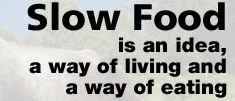 An example of an innovation nurtured in a design circle is Slow Foods. Focused on small-scale sustainable food production (good, clean, fair food). the organization:
An example of an innovation nurtured in a design circle is Slow Foods. Focused on small-scale sustainable food production (good, clean, fair food). the organization:
“….was founded in 1989 to counter the rise of fast food and fast life, the disappearance of local food traditions and people’s dwindling interest in the food they eat, where it comes from, how it tastes and how our food choices affect the rest of the world. “
Definitely a meaning-driven innovation.
What new and compelling meaning can you propose?
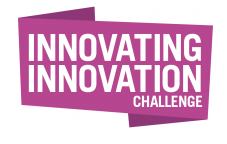 The management innovation exchange, a open innovation site dedicated to reinventing management, just announced a new innovation contest aimed at improving how organizations innovate. Here is what they want:
The management innovation exchange, a open innovation site dedicated to reinventing management, just announced a new innovation contest aimed at improving how organizations innovate. Here is what they want:
”In the M-Prize we’re launching today, we’re looking for examples and ideas that will help us how build innovation into the woof and warp of our organizations. While there aren’t many businesses that have yet made innovation a true core competence, we can, with your help, build a composite picture of how every element of a company’s management model can be retooled to make it innovation-friendly. “
The hope is that by retooling the management model in this way innovation will become a natural act. Definitely an important cognitive design challenge.
I am interested to hear from readers that want to create a HACK to enter this contest.
 Over 75% of the healthcare spending in the US goes to chronic conditions. One reason for the high cost is that they are not managed well. Recent studies show the ability to keep chronic disease in check is very difficult when patients have multiple conditions.
Over 75% of the healthcare spending in the US goes to chronic conditions. One reason for the high cost is that they are not managed well. Recent studies show the ability to keep chronic disease in check is very difficult when patients have multiple conditions.
Keeping chronic conditions in check, and better avoiding them in the first place, requires a range of patient behaviors and choices. This point is dramatically illustrated in Living Not with One, But Six Chronic Conditions:
“It’s estimated that 80% of heart disease and stroke, 80% of type 2 diabetes, and 40% of cancers could be eliminated if Americans were able to do three things: stop smoking, eat a healthy diet, and get regular exercise. These same behaviors may also prevent exacerbations of existing chronic conditions.”
Fortunately, we don’t lack the science needed to manage these diseases well. What we do lack are programs that deliver the required evidence-based care in a cost effective and psychologically compelling way. We need programs that deliver a think-and-feel experience with enough power to shift smoking, eating and activity behaviors as well as support learning new condition specific self-care routines. Such programs must be based on understanding and meeting the cognitive needs of patients as they manage limited self-regulatory capacity and struggle to learn from experience which routines will fit-and-stick-with their personal circumstances.
In short we need a cognitive design initiative focused on managing multiple chronic conditions.
And the audience for such an effort is fairly well defined. One report emphasizes how concentrated healthcare costs are. The sickest 5% of citizens account for nearly 50% of all healthcare costs. More dramatically, just 1% (3-4 million people) account for 22% of the cost! Most suffer from multiple chronic conditions.
I am interested to hear from readers that have insights into deeply-felt and unmet psychological needs (cognitive, affective, motivational, volitional) of patients that are failing to manage multiple chronic conditions.
 We naturally seek out products, services, relationships and interactions that give us net mental energy. We want a psychological uptick that comes from a sense of inclusion, an emotional high, intellectual stimulation, an improved sense of control or a host of other positive mental states. On the other hand, we veer away from things that present complexity, force reflection on difficult emotional matters or otherwise entail cognitive load and threaten to consume more mental energy than they generate.
We naturally seek out products, services, relationships and interactions that give us net mental energy. We want a psychological uptick that comes from a sense of inclusion, an emotional high, intellectual stimulation, an improved sense of control or a host of other positive mental states. On the other hand, we veer away from things that present complexity, force reflection on difficult emotional matters or otherwise entail cognitive load and threaten to consume more mental energy than they generate.
Craving positive mental energy and avoiding cognitive load is as fundamental as seeking pleasure and avoiding pain but is far more comprehensive.
 A recent study of math-heavy scientific articles show that even scientists are doing it. The study found that articles that contained multiple equations were cited 50% less often than articles containing few or no equations. Point is equations carry a heavy cognitive load. And this is not without implications:
A recent study of math-heavy scientific articles show that even scientists are doing it. The study found that articles that contained multiple equations were cited 50% less often than articles containing few or no equations. Point is equations carry a heavy cognitive load. And this is not without implications:
“If new theories are presented in a way that is off-putting to other scientists, then no one will perform the crucial experiments needed to test those theories,”
Communications designed for how minds work carry high knowledge content with low cognitive load. In principle that is what mathematical symbols do but that assumes a fluency in the syntax that journal readers might not have. The journal articles that were part of the study came from ecology and evolution, disciplines that are not as math-heavy as other scientific domains such as physics and chemistry.
Artifacts are what designers and innovators create. How you think about them determines how creative you will be.
 Artifacts are those abstractions, objects and activities that are designed for a specific purpose. They are the stuff and events created by people rather than nature. In general terms artifacts are a collection of four levels of overlapping features and functions with a distinct form that have been designed to:
Artifacts are those abstractions, objects and activities that are designed for a specific purpose. They are the stuff and events created by people rather than nature. In general terms artifacts are a collection of four levels of overlapping features and functions with a distinct form that have been designed to:
Take the radio for example. It is useful because it has been engineered to play music. Playing music, news and other audio broadcasts is the radio’s core function. Most modern radios have digital displays, scan features and memory buttons that make them very easy to use. These features give radios usability. Some radios are almost a work of art in the way they stimulate our visual and tactile senses with a sleek high-tech form, diode illuminated displays and grip-right buttons. Whereas other radios are plain in appearance and sensory experience and deemphasize features at level three.
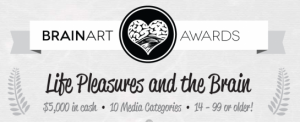 The BrainArt project has a call out for submissions that use art and design to compellingly illustrate the neuroscience of pleasure. They are looking for explorations or reactions to the theme “Life Pleasures & the Brain” cast in media that ranges from illustrations and digital art to sculptures or music and that are grounded in the neuroscience of the reward circuit and dopamine.
The BrainArt project has a call out for submissions that use art and design to compellingly illustrate the neuroscience of pleasure. They are looking for explorations or reactions to the theme “Life Pleasures & the Brain” cast in media that ranges from illustrations and digital art to sculptures or music and that are grounded in the neuroscience of the reward circuit and dopamine.
The contest includes a top prize of $5K, participation in an exhibit and other benefits. Innovators keep the copyrights to their work the deadline is September 1, 2012.
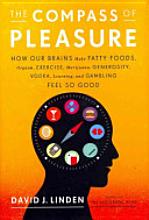 This is a natural contest for cognitive designers as it seeks to translate the neuroscience and psychology of pleasure into the construction of an artifact. The reward circuit and attending cognitive psychology plays a fundamental role in savoring, wanting, liking, learning, habit formation and many aspects of motivation, decision-making and behavior. If you are a bit rusty on the scientific background, I recommend The Compass of Pleasure. It is an easy read, provides nearly complete coverage and is current.
This is a natural contest for cognitive designers as it seeks to translate the neuroscience and psychology of pleasure into the construction of an artifact. The reward circuit and attending cognitive psychology plays a fundamental role in savoring, wanting, liking, learning, habit formation and many aspects of motivation, decision-making and behavior. If you are a bit rusty on the scientific background, I recommend The Compass of Pleasure. It is an easy read, provides nearly complete coverage and is current.
While this contest is more about art than design, there are several media categories of special interest to cognitive designers, most notably the one on communication design:
“Identify an opportunity, and envision a complete rethink, or new approach, to a campaign or consumer experience in relation to this year’s theme “Life Pleasures and the Brain”. Create an emotionally driven brand that is visionary and disruptive in its thinking. It’s about generating a journey that is unique, rational and that has the energy and drive to transform opinions and to allow people to make a deep connection which will in turn incite participation.”
Consider for example, designing an experience to ignite a movement to improve brain health, achieve positive behavior change or celebrate the existential pleasures of work.
Other media categories of interest to cognitive designers include the written word and space design. Of course this contest is a great opportunity for cognitive designers to partner with artists or visual designers and compete in any of the 10 media categories.
Judges are looking for how well you communicate a concept with respect to the contest’s theme (life pleasures & the brain) but are most interested in unique personal experiences and expressions. That is where a lot of good design and art comes from.